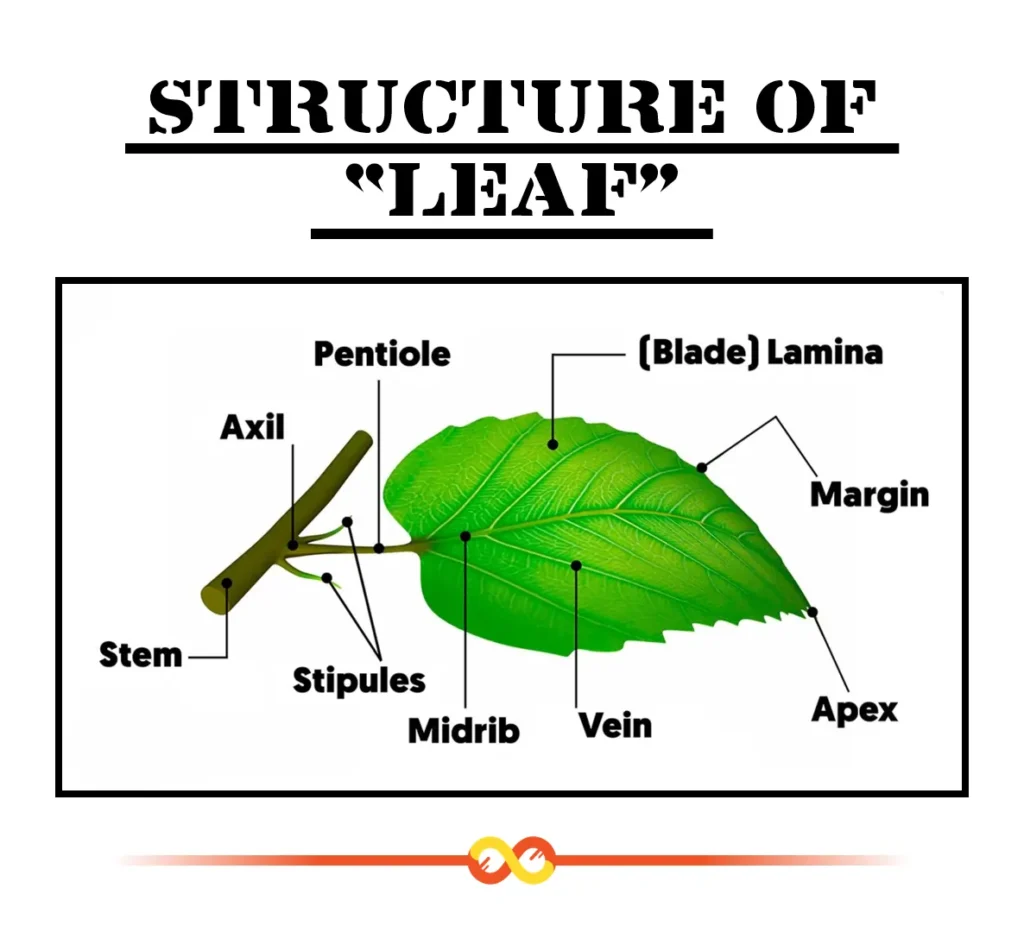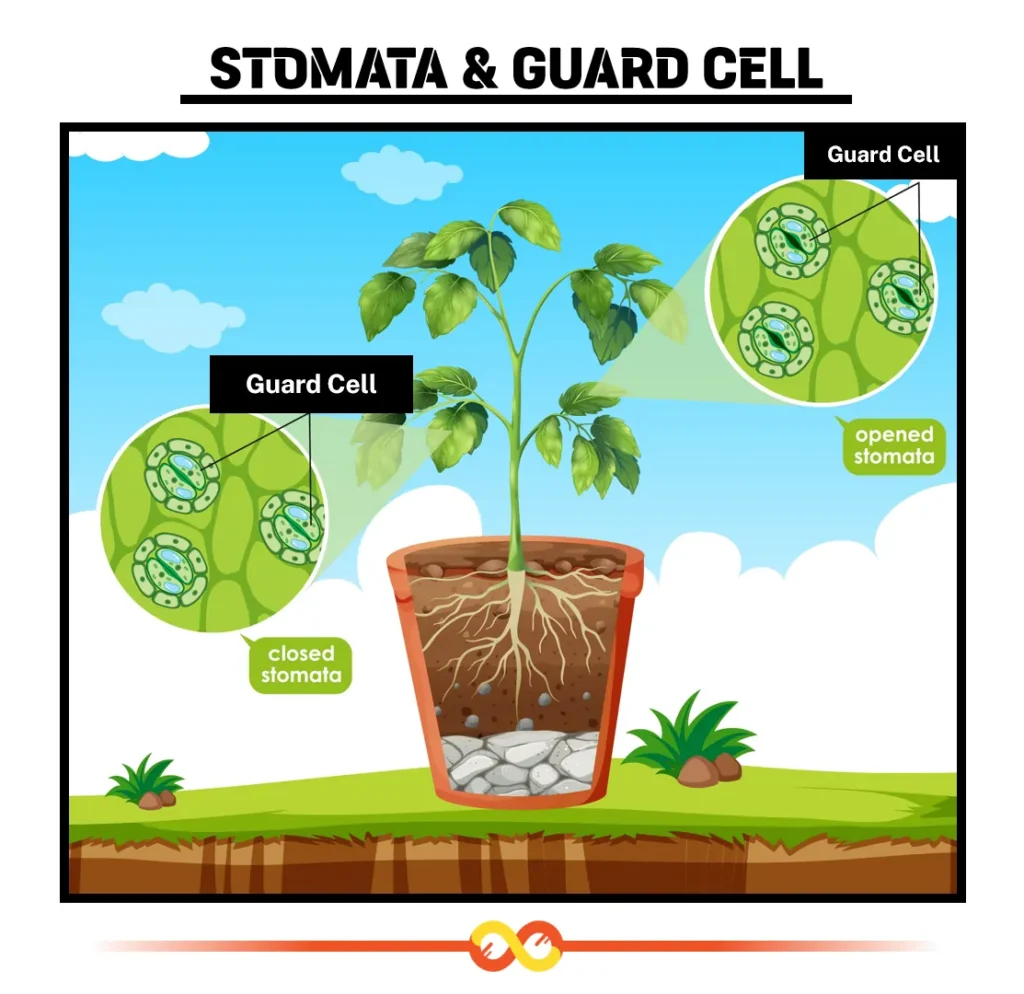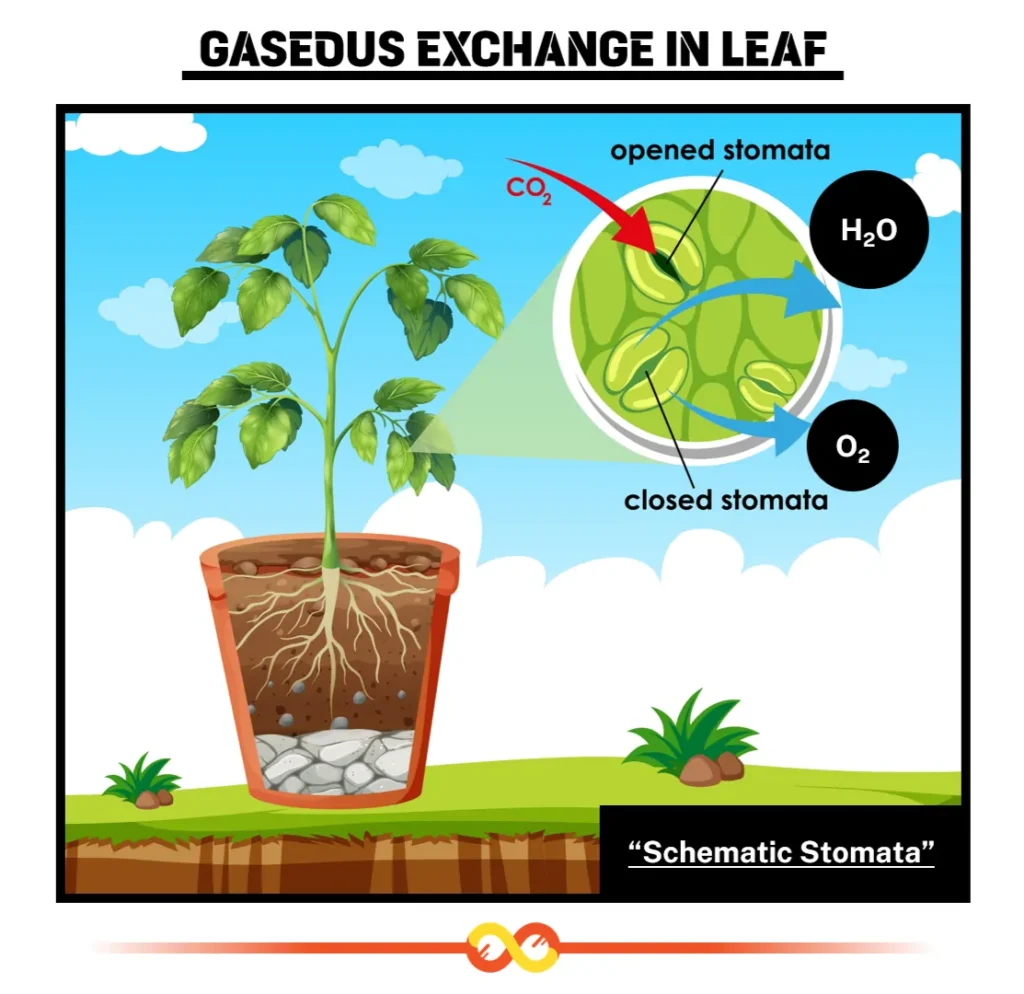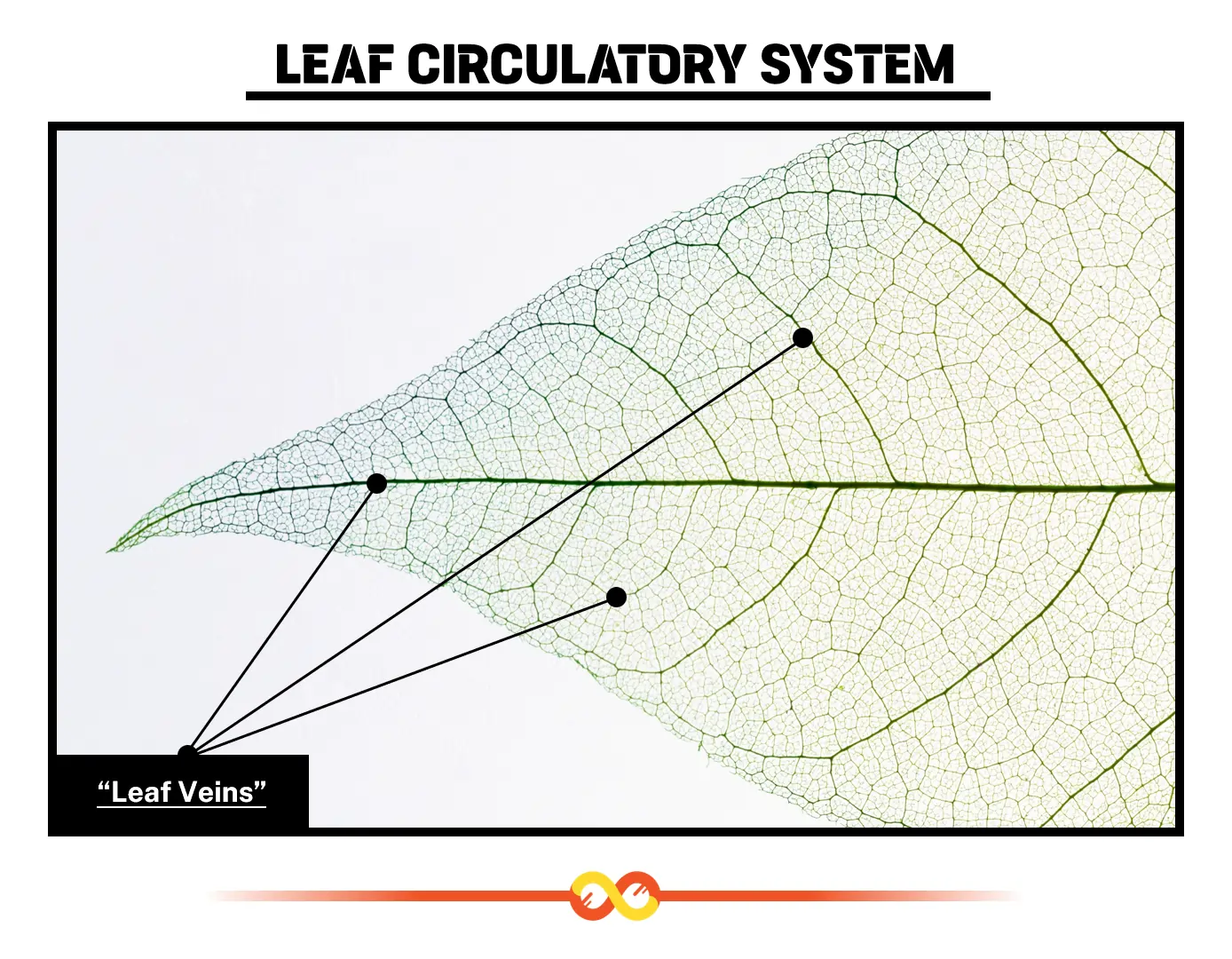Leaves are among the most vital and fascinating structures in the plant kingdom, serving as the primary sites for photosynthesis and other essential processes that sustain life. Their intricate anatomy is a testament to the ingenuity of nature, with each component meticulously designed to optimize the plant’s ability to capture sunlight, exchange gases, and transport nutrients. From the broad, sun-soaking lamina to the microscopic stomata, every part of a leaf works in harmony to ensure the plant’s survival and contributes to the broader ecosystem.
In this comprehensive exploration, we delve into the detailed structure of leaves, examining the roles of the lamina, petiole, stomata, and veins, and highlighting their remarkable adaptations across diverse environments.
Table of Contents
The Lamina: The Solar Panel of the Plant
The lamina, often referred to as the leaf blade, is the broad, flat portion of the leaf that serves as the primary surface for capturing sunlight. This expansive area is critical for photosynthesis, the process by which plants convert sunlight, carbon dioxide, and water into glucose and oxygen. The lamina’s design is a marvel of efficiency, with a thin, flattened structure that maximizes light absorption while allowing for the diffusion of gases and the transport of nutrients. Its surface is often covered with a waxy cuticle, which reduces water loss while protecting the leaf from environmental stressors such as UV radiation and pathogens.
The shape and size of the lamina vary widely among plant species, reflecting adaptations to specific environmental conditions. For example, broad-leaved plants like maples and oaks, which thrive in temperate forests, have large laminas that capture ample sunlight in shaded environments. In contrast, plants in arid regions, such as agaves, have thick, narrow laminas that minimize water loss while still performing photosynthesis. Some plants, like ferns, have divided laminas called fronds, which increase surface area for light capture in low-light conditions. These variations highlight the lamina’s role as a flexible, adaptable structure tailored to the plant’s ecological niche.
The internal structure of the lamina is equally complex, consisting of multiple layers of specialized cells. The upper epidermis provides protection, while the mesophyll layer contains chloroplasts, the organelles responsible for photosynthesis. The lower epidermis, often studded with stomata, facilitates gas exchange. This intricate organization ensures that the lamina is not only a solar panel but also a hub for metabolic activity, making it indispensable to the plant’s survival.

The Petiole: The Flexible Connector
The petiole is the slender stalk that connects the lamina to the plant’s stem, acting as a flexible hinge that positions the leaf for optimal sunlight exposure. This seemingly simple structure plays a critical role in the leaf’s functionality, allowing it to adjust its angle to track the sun’s movement or avoid excessive light in harsh conditions. The petiole’s flexibility also helps leaves withstand wind and other mechanical stresses, reducing the risk of damage.
In addition to its structural role, the petiole serves as a conduit for the transport of water, minerals, and sugars between the leaf and the rest of the plant. It contains vascular tissues, including xylem and phloem, which form a continuous network with the leaf’s veins and the plant’s stem. This vascular system ensures that the leaf receives the resources it needs for photosynthesis while exporting the sugars it produces to other parts of the plant. In some species, such as celery, the petiole is thick and fleshy, serving as a storage organ for water and nutrients, which can be consumed by humans and animals alike.
Not all leaves have petioles; those that attach directly to the stem are called sessile leaves, as seen in grasses and some succulents. The presence or absence of a petiole is often an adaptation to the plant’s environment. For instance, sessile leaves may reduce water loss in arid climates by minimizing exposed surface area. Conversely, plants with long petioles, like those of the cottonwood tree, can position their leaves to capture sunlight in crowded forest canopies. The petiole’s versatility underscores its importance as both a structural and functional component of the leaf.
The Stomata: Gatekeepers of Gas and Water Exchange
Stomata are microscopic pores found primarily on the underside of the leaf, though they may also appear on the upper surface in some plants. These tiny openings are flanked by specialized cells called guard cells, which regulate their opening and closing in response to environmental cues such as light, humidity, and carbon dioxide levels. Stomata are critical for two key processes: gas exchange and transpiration. During photosynthesis, stomata allow carbon dioxide to enter the leaf and oxygen to exit, while during transpiration, they release water vapor, helping to regulate the plant’s temperature and nutrient flow.

The regulation of stomatal opening is a delicate balancing act. When stomata are open, they facilitate photosynthesis and transpiration, but they also risk excessive water loss, particularly in dry environments. Guard cells respond to environmental conditions by changing shape, opening the stomata during the day when photosynthesis is active and closing them at night or during drought to conserve water. This dynamic control is essential for the plant’s survival, especially in challenging climates.

Stomatal adaptations vary widely among plant species. For example, desert plants like cacti have fewer stomata, often sunken into the leaf surface, to reduce water loss. In contrast, aquatic plants like water lilies have stomata on the upper surface of their floating leaves, as the underside is submerged. Some plants, such as those in the Crassulacean Acid Metabolism (CAM) pathway, open their stomata at night to take in carbon dioxide, storing it for daytime photosynthesis to minimize water loss. These adaptations demonstrate the stomata’s role as gatekeepers, finely tuned to the plant’s environmental needs.
The Veins: The Leaf’s Circulatory System
The veins of a leaf form a complex network of vascular tissues that serve as the plant’s circulatory system, transporting water, minerals, and sugars throughout the leaf and beyond. Composed of xylem and phloem, the veins ensure that every cell in the leaf has access to the resources it needs to function. Xylem delivers water and minerals from the roots to the leaf, providing the raw materials for photosynthesis, while phloem transports the sugars produced during photosynthesis to other parts of the plant, such as the roots, stems, and fruits.

The arrangement of veins, known as venation, is a defining characteristic of plant species. Monocots, such as grasses and lilies, typically exhibit parallel venation, with veins running side by side along the length of the leaf. Dicots, like roses and oaks, have net-like or reticulate venation, with a branching pattern that forms a web across the leaf. These patterns are not merely aesthetic; they reflect the plant’s evolutionary adaptations to optimize resource distribution. For example, net-like venation provides multiple pathways for transport, ensuring that damage to one vein does not disrupt the entire system.
Veins also provide structural support, giving the leaf rigidity and preventing it from collapsing under its own weight or environmental stresses. In some plants, such as palms, the veins are reinforced with tough fibers, allowing the leaf to withstand strong winds. The veins’ dual role as both transport and support structures highlights their critical importance to the leaf’s functionality and the plant’s overall health.
Adaptations and Variations in Leaf Anatomy
The structure of leaves is remarkably diverse, reflecting the wide range of environments in which plants grow. Each component of the leaf—lamina, petiole, stomata, and veins—can vary in form and function to meet the challenges of specific ecological niches.
- Lamina Variations: In tropical rainforests, plants like banana trees have large, broad laminas to capture sunlight in shaded conditions, while desert plants like succulents have small, thick laminas to conserve water. Some plants, like pines, have needle-like laminas that reduce surface area and withstand cold, dry conditions.
- Petiole Adaptations: In climbing plants like grapevines, petioles may be elongated and flexible, allowing leaves to reach sunlight in dense canopies. In contrast, desert plants like agaves often lack petioles, reducing exposed surface area to minimize water loss.
- Stomatal Modifications: Plants in humid environments, such as ferns, have abundant stomata to maximize gas exchange, while xerophytes like cacti have sunken stomata to reduce transpiration. CAM plants, like pineapples, open their stomata at night to conserve water, showcasing a unique temporal adaptation.
- Venation Patterns: The parallel venation of monocots like corn is efficient for rapid growth in open fields, while the net-like venation of dicots like maples supports larger, more complex leaves in forested environments. Some plants, like ginkgoes, have fan-shaped venation that enhances structural stability.
These adaptations illustrate the incredible plasticity of leaf anatomy, allowing plants to thrive in environments ranging from lush wetlands to arid deserts. By tailoring their structure to their surroundings, leaves ensure the plant’s survival and contribute to the diversity of life on Earth.
The Ecological and Functional Significance of Leaf Anatomy
The anatomy of leaves is not only a marvel of biological engineering but also a cornerstone of ecological systems. Leaves are the primary sites for photosynthesis, producing the oxygen and glucose that sustain life. Their stomata regulate the exchange of gases, contributing to the balance of atmospheric carbon dioxide and oxygen. The veins and petioles ensure the efficient transport of resources, supporting the plant’s growth and reproduction. Collectively, these structures enable leaves to perform their multifaceted roles, from energy production to environmental regulation.
Ecologically, leaves are foundational to terrestrial ecosystems. Forests, with their vast canopies of leaves, act as carbon sinks, absorbing carbon dioxide and mitigating climate change. Grasslands, with their parallel-veined leaves, support grazing animals and stabilize soils. Even in urban environments, the leaves of street trees improve air quality and provide shade, demonstrating their broader impact on human well-being.
Conclusion: Leaves as Nature’s Architectural Marvels
The anatomy of leaves—comprising the lamina, petiole, stomata, and veins—is a masterpiece of form and function, perfectly suited to the demands of photosynthesis, gas exchange, and nutrient transport. Each component is a testament to the precision of evolution, tailored to the plant’s environment and ecological role. From the sun-soaking lamina to the intricate vascular network of the veins, leaves are dynamic organs that sustain not only plants but also the countless organisms that depend on them. As we marvel at their complexity and adaptability, we are reminded of the profound interconnectedness of life, with leaves standing as nature’s architectural marvels at the heart of the living world.
Related Articles
- Morphology of Flowering Plants: A Comprehensive Exploration
- Root System in Plants: Types and Functions of Roots
- Taproot System: Structure, Characteristics, and Examples
- Regions of a True Root: A Comprehensive Analysis
- Fibrous Root System: An Essential Adaptation for Stability and Nutrition
- Characteristics of the Fibrous Root System: A Detailed Exploration
- Functions of the Fibrous Root System: A Detailed Exploration
- Structure of Fibrous Root System: A Comprehensive Exploration
- Importance of the Fibrous Root System in Agriculture and Ecology
- Characteristics of the Taproot System: A Detailed Exploration
- Advantages of the Taproot System: A Detailed Exploration
- Difference Between Taproot and Fibrous Root Systems: A Detailed Exploration
- Structure of Root: A Comprehensive Exploration
- Modifications of Root: A Comprehensive Exploration
- Dicot Root: Definition, Structure, Characteristics, and Examples
- Dicot Root Characteristics: A Detailed Exploration
- Dicot Root Cross-Section: A Detailed Exploration
- Monocot Root: Definition, Structure, Characteristics and Examples
- Monocot Root Characteristics: A Detailed Exploration
- Monocot Root Cross-Section: A Detailed Exploration
- Difference between Dicot and Monocot Root: A Detailed Exploration
- Shoot System: A Vital Component of Plant Growth and Reproduction
- Stems: Characteristics, Functions, and Modifications With Detailed Exploration
- Characteristics of Stem: A Detailed Exploration
- Functions of the Stem: A Detailed Exploration
- Internal Structure of Plant Stems: A Detailed Exploration
- Morphology of the Stem in Angiosperms: A Detailed Exploration
- Types of Stems in Plants: Herbaceous, Woody, Climbing, and Creeping Stems
- Herbaceous Stems: Characteristics and Examples With Detailed Exploration
- Woody Stems: Characteristics and Examples With Detailed Exploration
- Climbing and Creeping Stems: Adaptations for Spreading and Support
- The Cortex of the Stem: Structure and Function with Detailed Exploration
- Stem Modifications: A Spectrum of Adaptations with Detailed Exploration
- Aerial Stem Modifications: A Comprehensive Exploration
- Stem Tendrils: Nature’s Ingenious Climbing Tools Unveiled
- Thorns: Nature’s Woody Guardians, A Deep Dive into Plant Defense Mechanisms
- Phylloclades: The Unsung Heroes of Desert Plant Survival
- Cladophylls: Unveiling Nature’s Ingenious Twist on Photosynthesis
- Bulbils: Nature’s Ingenious Reproductive Innovators in Plant Propagation
- Thalamus in Flower: The Unsung Hero of Floral Development
- Subaerial Stem Modifications: A Detailed Comprehensive Exploration
- Runners: The Ingenious Creeping Architects of the Plant Kingdom
- Suckers: The Resilient Underground Warriors of Plant Regeneration
- Stolons: A Deep Dive into Their Biology and Ecological Brilliance
- Offsets: The Unsung Heroes of Plant Propagation in Aquatic Ecosystems
- Underground Stem Modifications: Nature’s Subterranean Survival Strategies
- Rhizomes: Nature’s Subterranean Architects, A Detailed Exploration
- Bulbs: Detailed Exploration of the World of Bulbs as Nature’s Nutrient Vaults
- Corms: Nature’s Compact Powerhouses of Survival and Renewal
- Tubers: Nature’s Swollen Reservoirs of Energy and Resilience
- Leaves: The Vital Role in Photosynthesis and Plant Survival
- Anatomy of Leaves: Nature’s Masterpiece of Form and Function
- Functions of Leaves: Powerhouses of Plant Survival and Ecosystem Health
- Flowers: Nature’s Reproductive Masterpieces in Angiosperms
- Anatomy of Flowers: A Masterclass in Nature’s Reproductive Design
- Functions of Flowers: A Detailed Comprehensive Exploration
Video Links Related to this Article
- Morphology Of Flowering Plants (YouTube Channel: Educational Videos)
- Shoot system (YouTube Channel: Swanson Does Science)
- Stem And Leaf: Structural Morphology of Flowering Plants (YouTube Channel: Elearnin)
- Underground Stem Modifications (YouTube Channel: 7activestudio)
Frequently Asked Questions (FAQs)
FAQ 1. What Is the Role of the Lamina in a Leaf?
The lamina, or leaf blade, is the broad, flat part of a leaf that serves as the primary surface for capturing sunlight, making it essential for photosynthesis. Its expansive, thin structure maximizes light absorption while allowing for efficient gas diffusion and nutrient transport. Covered with a waxy cuticle, the lamina protects the leaf from water loss and environmental stressors like UV radiation and pathogens, ensuring it can perform its metabolic functions effectively.
- Photosynthesis Hub: The lamina contains chloroplasts in its mesophyll layer, where sunlight is converted into glucose and oxygen.
- Environmental Adaptations: Broad laminas in maples capture light in shaded forests, while narrow laminas in agaves reduce water loss in deserts.
- Structural Layers: The upper epidermis, mesophyll, and lower epidermis work together to support photosynthesis and gas exchange.
The lamina’s design as a solar panel underscores its critical role in energy production, making it the cornerstone of a leaf’s functionality.
FAQ 2. How Does the Petiole Contribute to Leaf Function?
The petiole, the slender stalk connecting the leaf blade to the stem, acts as a flexible hinge that positions the leaf for optimal sunlight exposure. Its ability to adjust the leaf’s angle enhances photosynthesis by ensuring maximum light capture. Additionally, the petiole contains vascular tissues that transport water, minerals, and sugars, linking the leaf to the plant’s broader circulatory system.
- Flexibility: Petioles allow leaves to track sunlight or avoid intense light, as seen in sunflowers.
- Vascular Transport: Xylem and phloem in the petiole deliver water and nutrients to the leaf and export sugars to other plant parts.
- Variations: Sessile leaves, like those in grasses, lack petioles to minimize water loss, while celery’s thick petioles store nutrients.
By providing both structural support and resource transport, the petiole is a vital component of the leaf’s anatomy, enhancing its efficiency and resilience.
FAQ 3. What Are Stomata, and Why Are They Important?
Stomata are microscopic pores on the leaf surface, primarily on the underside, that regulate gas exchange and transpiration. Flanked by guard cells, stomata open to allow carbon dioxide to enter for photosynthesis and oxygen and water vapor to exit, while closing to conserve water during drought or at night. This dynamic regulation is crucial for balancing the plant’s metabolic needs with environmental conditions.
- Gas Exchange: Stomata facilitate the intake of carbon dioxide and release of oxygen, supporting photosynthesis and respiration.
- Transpiration: Water vapor loss through stomata helps cool the plant and drives nutrient transport from roots to leaves.
- Adaptations: Desert plants like cacti have sunken stomata to reduce water loss, while water lilies have stomata on the upper leaf surface.
As gatekeepers of gas and water exchange, stomata are essential for maintaining the plant’s health and contributing to atmospheric balance.
FAQ 4. How Do Veins Support the Leaf’s Functions?
Veins form a complex network of vascular tissues within the leaf, acting as its circulatory system. Composed of xylem, which transports water and minerals from the roots, and phloem, which carries sugars produced during photosynthesis, veins ensure that every leaf cell has access to necessary resources. They also provide structural support, giving the leaf rigidity to withstand environmental stresses.
- Resource Transport: Xylem delivers water for photosynthesis, while phloem distributes sugars to roots, stems, and fruits.
- Veination Patterns: Monocots like grasses have parallel venation, while dicots like oaks have net-like venation for efficient distribution.
- Structural Role: Veins in palms are reinforced with fibers to support large leaves against wind.
The veins’ dual role in transport and support makes them indispensable to the leaf’s functionality and the plant’s overall survival.
FAQ 5. How Does Leaf Anatomy Vary Across Different Environments?
Leaf anatomy varies significantly across environments, with each component—lamina, petiole, stomata, and veins—adapted to meet specific ecological challenges. These variations allow plants to optimize light capture, water conservation, and resource distribution in diverse habitats, from rainforests to deserts.
- Tropical Rainforests: Banana trees have large laminas to capture light in shaded canopies, with abundant stomata for gas exchange.
- Deserts: Succulents have small, thick laminas and sunken stomata to minimize water loss, often lacking petioles.
- Aquatic Environments: Water lilies have stomata on the upper leaf surface and buoyant laminas to float on water.
- Temperate Forests: Oaks have net-like venation and broad laminas to support complex leaves in varied light conditions.
These adaptations highlight the plasticity of leaf anatomy, enabling plants to thrive in a wide range of ecological niches.
FAQ 6. Why Is the Lamina Considered the Solar Panel of the Plant?
The lamina is often called the solar panel of the plant because its broad, flat surface is designed to capture sunlight for photosynthesis, the process that converts light energy into chemical energy. Its thin structure and layered organization, including the chloroplast-filled mesophyll, optimize light absorption and gas diffusion, making it the primary site for energy production in the plant.
- Light Capture: The lamina’s expansive surface maximizes exposure to sunlight, essential for chlorophyll to function.
- Protective Cuticle: A waxy layer shields the lamina from water loss and environmental damage, ensuring sustained photosynthesis.
- Example: Maple trees’ broad laminas capture light in shaded forests, while pine needles reduce surface area in cold climates.
The lamina’s role as a solar panel underscores its importance in fueling the plant’s growth and supporting life on Earth.
FAQ 7. What Makes Stomata Essential for Plant Survival?
Stomata are essential for plant survival because they regulate the exchange of gases and water, processes critical to photosynthesis, respiration, and temperature control. By opening and closing, stomata balance the need for carbon dioxide intake and oxygen release with the risk of water loss through transpiration. This regulation is vital in varying environmental conditions, from humid tropics to arid deserts.
- Photosynthesis Support: Stomata allow carbon dioxide to enter the leaf, fueling glucose production.
- Temperature Regulation: Transpiration through stomata cools the plant, preventing overheating.
- Adaptive Strategies: CAM plants like pineapples open stomata at night to conserve water, showcasing stomatal versatility.
Without stomata, plants would struggle to perform photosynthesis or maintain hydration, making these pores indispensable to their survival.
FAQ 8. How Do Veins Contribute to the Leaf’s Structural Integrity?
Veins not only transport resources but also provide structural integrity to the leaf, preventing it from collapsing under its own weight or environmental stresses like wind. The network of xylem and phloem, reinforced with tough fibers in some species, gives the leaf rigidity and resilience, ensuring it can maintain its shape and function effectively.
- Support Framework: Veins act like a scaffold, supporting the lamina’s broad surface, as seen in large palm leaves.
- Venation Efficiency: Net-like venation in dicots provides multiple pathways, ensuring stability even if one vein is damaged.
- Environmental Resilience: Reinforced veins in grasses help leaves withstand grazing and wind in open fields.
By combining transport and support, veins are critical to the leaf’s durability and overall functionality.
FAQ 9. What Are Some Examples of Petiole Adaptations in Plants?
The petiole’s structure and presence vary across plant species, reflecting adaptations to specific environmental needs. Its flexibility, vascular role, and occasional absence (in sessile leaves) demonstrate its adaptability in supporting leaf function and plant survival.
- Climbing Plants: Grapevines have long, flexible petioles that position leaves to reach sunlight in dense canopies.
- Desert Plants: Agaves often lack petioles, reducing surface area to conserve water in arid conditions.
- Storage Organs: Celery’s thick petioles store water and nutrients, serving as an edible resource.
- Sessile Leaves: Grasses have no petioles, streamlining their structure for rapid growth in open environments.
These adaptations highlight the petiole’s versatility, enabling leaves to meet diverse ecological demands.
FAQ 10. How Does Leaf Anatomy Support Ecological Systems?
Leaf anatomy supports ecological systems by enabling photosynthesis, gas exchange, and resource transport, which sustain plants and the broader environment. The lamina, petiole, stomata, and veins work together to produce oxygen, absorb carbon dioxide, and provide food and habitats, making leaves foundational to ecosystems.
- Oxygen Production: Stomata and laminas facilitate photosynthesis, releasing oxygen that supports animal life.
- Carbon Sequestration: Leaves in forests act as carbon sinks, mitigating climate change by absorbing carbon dioxide.
- Ecosystem Support: Grassland leaves feed herbivores, while forest canopies shelter countless species.
- Urban Benefits: Tree leaves improve air quality and provide shade, enhancing human well-being.
The intricate anatomy of leaves underpins their ecological significance, shaping the health and diversity of life on Earth.

